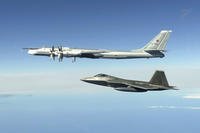Lawmakers are demanding more information from the U.S. Defense Department about its battlefield intelligence system.
House and Senate panels singled out the program, known as the Distributed Common Ground System, in reports accompanying their versions of the 2014 defense authorization bill. The legislation sets policy goals and spending targets for the year beginning Oct. 1.
The Senate Armed Services Committee asked for an independent assessment of the Army's version of the program and voted to temporarily withhold some of the funding the service requested for the effort. The House's counterpart panel wants to know how the services plan to finish developing and fielding the system.
The program "has been under development and deployment for a number of years, and the cost, schedule and requirements continue to grow without keeping pace with the demands of the users or the current state of the art in technology," House members wrote in their report.
The House in June approved the language in the bill, officially called the 2014 National Defense Authorization Act, or NDAA. The Senate hasn't yet voted on the measure.
The Distributed Common Ground System was conceived in the 1990s as a better way to analyze and share intelligence by shifting from “stovepipe” systems, in which data can’t be easily modified or shared, to an open architecture based on common standards set by the larger intelligence community.
Yet troops in Afghanistan since 2010 have asked for better tools to sift through the torrent of digital information being captured by unmanned aircraft and other platforms.
Rep. Duncan Hunter, R-Calif., a former Marine who served tours in Iraq and Afghanistan, in April got into an argument with Army Chief of Staff Gen. Raymond Odierno during a hearing on Capitol Hill after questioning why a commander who requested a commercial product called Palantir never received it.
U.S. Special Operations Command and the Marine Corps have opted to field the commercial product to troops after finding it “easy to use” and “effective” on missions in Afghanistan in recent years, according to a June report from the Government Accountability Office and obtained by Military.com.
The software is made by Palo Alto, Calif.-based Palantir Technologies Inc. The company was founded in 2004 with seed money from In-Q-Tel, the venture capital arm of the Central Intelligence Agency. The military has spent about $35 million on versions of the product, according to government auditors.
The military has spent about $6 billion developing the military-wide system, which is estimated to cost at least $10.6 billion, according to the GAO, the investigative arm of Congress.
The Army's version of the system in October was deemed "not operationally effective, not operationally suitable and not survivable," according to a 2012 report prepared by J. Michael Gilmore, the Pentagon's top weapons tester.
The Army has said it's pursuing an open-architecture approach so it doesn't have to rely on a single program or developer.
The Senate legislation would have the National Assessment Group, a Pentagon organization that provides planning guidance, to determine whether the existing system's graphical interfaces "are adequate" and to identify a sample of "commercially licensed analyst tools that perform the same or similar functions," among other tasks.
The bill would also withhold about a third of the $27.6 million in research and development the Army requested for the program in fiscal 2014 until it receives the report. Overall, it would provide some $146 million for the system next year, including $62 million to build a "station operations building" at Beale Air Force Base in California.
The House's version of the legislation directs Frank Kendall, the Pentagon's top weapons buyer, to submit a report on the services' plans for adopting the system and sharing its information.
The so-called implementation plan "should include the overall requirements, technologies, acquisition strategies, time frames, and investments needed by each of the military services to complete development and fielding," according to the committee's report.








